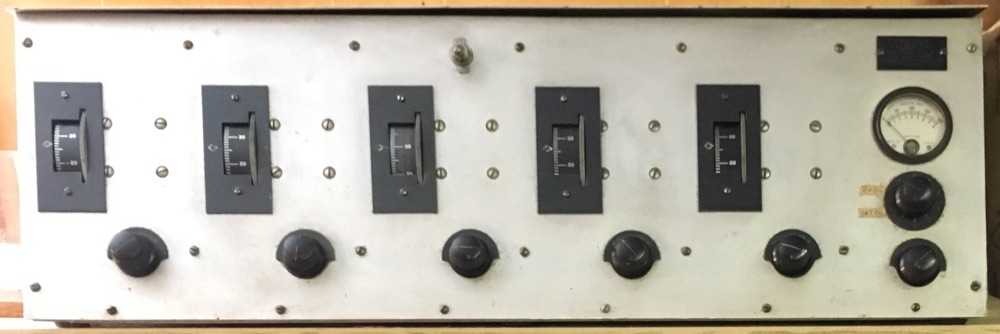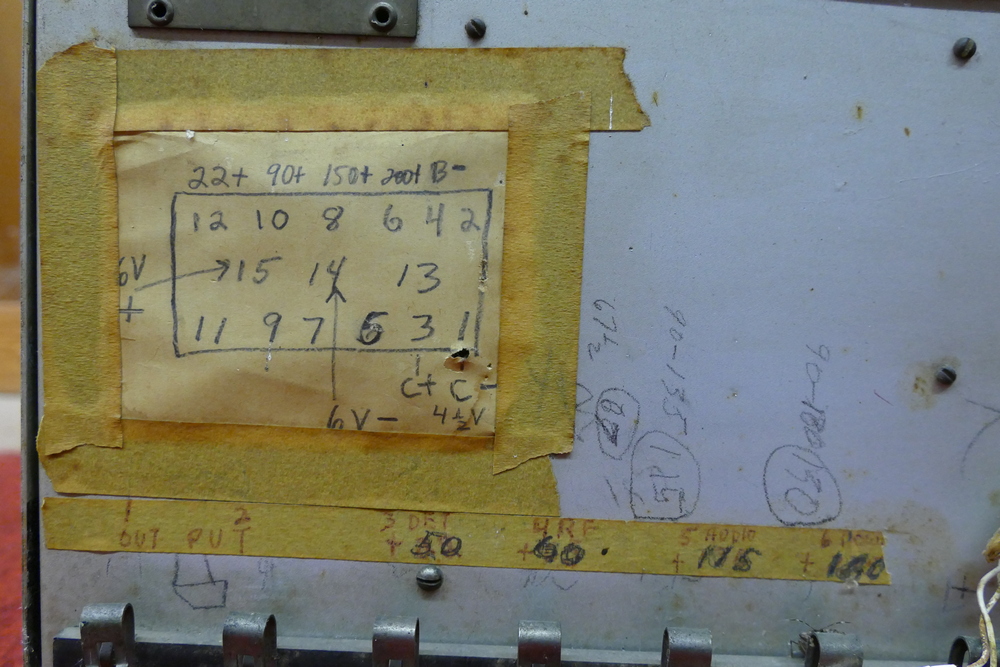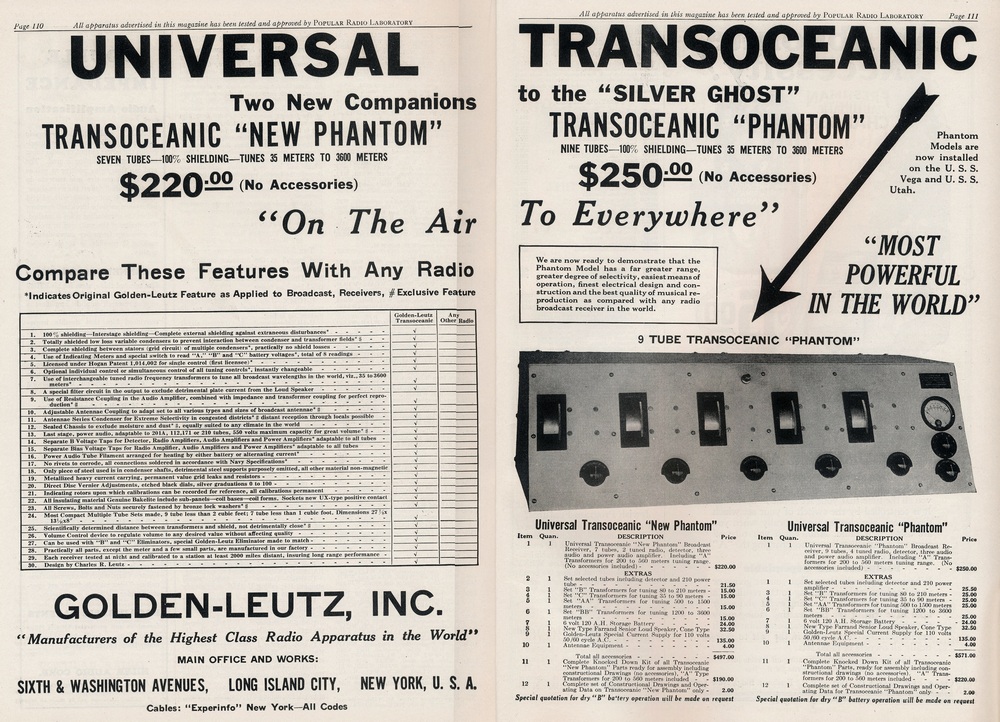Leutz responded by making TRF (Tuned Radio Frequency) radios which used an older and inferior technology compared to superheterodynes. He designed his TRF radios to be the very best possible so they could compete with superheterodyne radios, but not use the Edwin H. Armstrong patented technology. The Phantom, Manufactured by Golden-Leutz, Inc. in 1927, was a specialty radio aimed at the consumer who desired an instrument that represented the latest advances in TRF (Tuned Radio Frequency) receiver technology. The Long Island, New York business advertised their company as “Manufacturers of the Highest Class Radio Apparatus in the World”. The Phantom is a TRF radio like many others of the period. The main differences between it and others is that it has four stages of radio frequency (RF) tuning rather than three as in the “3-dialer” sets. In addition, the Leutz Phantom uses five controls to tune those four RF stages and the grid-leak detector. The two knobs at the far right control the current to the tube filaments which is indicated on the meter. This radio was not easy to operate!
Our example of the Phantom comes with a manual which is reproduced here in PDF format. Leutz printed more than manuals. He was the author of four books about radio technology. He also had a very aggressive advertising campaign during 1927. We have included below a sample advertisement form the January, 1927 edition of Popular Radio. The technical detail of the ad offers plenty of proof that Leutz was directing his sales pitch at users who wanted the most advanced TRF radio available. The Leutz may not have outperformed the superheterodyne; but, it certainly made a valiant effort!
References and Resources
The Henry Ford Museum, artifact collection, Universal Phantom Broadcast Radio Receiver, 1927-1928
Radiomuseum.org , reference page, Universal Transoceanic Phantom
1928 Screen Grid Tube version of this radio, a significant upgrade.
Daniel Schoo and his Golden-Leutz, Antique Radio Classified magazine, Oct., 2007
Leutz Universal Transocenic Phantom Special Type 9, article in ARC, by Daniel Schoo
Radio Manufacturers of the 1920s, Vol. 2, pp. 123-131, by Alan Douglas
Radio News, December 1928, pp 11






